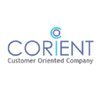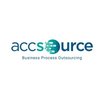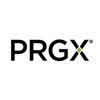Filter interviews by
S.S. Kothari Mehta & Co Interview Questions and Answers
17 Interview questions
TDS rate for contractors varies based on the type of payment and nature of work.
TDS rate for contractors can range from 1% to 10% depending on the type of payment and nature of work.
For example, TDS rate for payment to contractors for work like advertising, catering, transport, etc. is 1%.
However, TDS rate for payment to contractors for professional or technical services is 10%.
Contractors can also apply for lower...
Defaulting in depositing undisputed statutory dues can lead to legal consequences and financial penalties.
Defaulting in depositing undisputed statutory dues can result in penalties, interest, and legal action by the authorities.
It is important for businesses to ensure timely deposit of statutory dues such as TDS, GST, PF, etc.
Failure to deposit statutory dues can also impact the company's reputation and creditwort...
CARO reporting requirements refer to the reporting standards specified by the Companies (Auditor's Report) Order.
CARO reporting requirements are specified by the Companies (Auditor's Report) Order, 2016.
These requirements mandate specific disclosures to be made by auditors in their report on the financial statements of companies.
Some of the key areas covered by CARO reporting include fixed assets, inventory, loans...
TDS deposit date is the due date by which tax deducted at source must be deposited with the government.
TDS deposit date is usually the 7th of the following month for non-government deductors.
For government deductors, TDS deposit date is usually the 7th of the following month except for March, where it is the 30th.
Late deposit of TDS may attract interest and penalties.
Internal audit is a process where an organization's operations, financials, and compliance are reviewed by an internal team.
Internal audit helps ensure that the organization's operations are efficient and effective.
It also helps in identifying risks and ensuring compliance with laws and regulations.
Internal auditors provide recommendations for improvement based on their findings.
Examples of internal audit activiti...
Fixed asset audits involve physical verification, reconciliation with records, and assessment of depreciation.
Perform physical verification of fixed assets to ensure they exist and are in the stated condition.
Reconcile fixed asset records with financial statements to identify any discrepancies.
Assess the depreciation of fixed assets to ensure it is accurately recorded.
Verify the location and usage of fixed assets ...
ROU Asset can be calculated by determining the present value of lease payments and adding initial direct costs.
Calculate the present value of lease payments using the discount rate
Add any initial direct costs incurred in obtaining the lease
Subtract any lease incentives received from the lessor
Consider any impairment charges or adjustments needed for the ROU Asset
Example: Present value of lease payments = $100,000,...
Revenue recognition under Ind AS involves following specific criteria and guidelines.
Revenue should be recognized when it is probable that economic benefits will flow to the entity and the revenue can be reliably measured.
Revenue should be recognized at the fair value of the consideration received or receivable.
Revenue should be recognized when specific criteria are met, such as transfer of risks and rewards of ow...
CARO 2020 introduced significant changes compared to CARO 2016.
Expanded scope of reporting requirements
Introduction of new reporting formats
Enhanced focus on fraud detection and reporting
Increased responsibilities for auditors
Additional disclosures related to related party transactions
Cash and bank are generally considered low risk items due to their stability and liquidity.
Cash and bank deposits are easily accessible and can be quickly converted into cash if needed.
Banks are typically insured by government agencies, providing an additional layer of security for deposits.
While there is a risk of theft or fraud, proper security measures can mitigate these risks.
Investing in high-risk assets like...
S.S. Kothari Mehta & Co Interview Experiences
9 interviews found
(2 Questions)
- Q1. Te;ll me about you
- Q2. Strenght & weaknesses
(2 Questions)
- Q1. Default in depositing the undisputed statutiry dues
- Ans.
Defaulting in depositing undisputed statutory dues can lead to legal consequences and financial penalties.
Defaulting in depositing undisputed statutory dues can result in penalties, interest, and legal action by the authorities.
It is important for businesses to ensure timely deposit of statutory dues such as TDS, GST, PF, etc.
Failure to deposit statutory dues can also impact the company's reputation and creditworthines...
- Q2. Rate at which TDS is deducted from contractors
- Ans.
TDS rate for contractors varies based on the type of payment and nature of work.
TDS rate for contractors can range from 1% to 10% depending on the type of payment and nature of work.
For example, TDS rate for payment to contractors for work like advertising, catering, transport, etc. is 1%.
However, TDS rate for payment to contractors for professional or technical services is 10%.
Contractors can also apply for lower TDS ...
I applied via Referral and was interviewed in May 2024. There was 1 interview round.
(4 Questions)
- Q1. What is TDS deposit date
- Ans.
TDS deposit date is the due date by which tax deducted at source must be deposited with the government.
TDS deposit date is usually the 7th of the following month for non-government deductors.
For government deductors, TDS deposit date is usually the 7th of the following month except for March, where it is the 30th.
Late deposit of TDS may attract interest and penalties.
- Q2. GST returns (Gst-1,2,3)
- Q3. What is internal audit
- Ans.
Internal audit is a process where an organization's operations, financials, and compliance are reviewed by an internal team.
Internal audit helps ensure that the organization's operations are efficient and effective.
It also helps in identifying risks and ensuring compliance with laws and regulations.
Internal auditors provide recommendations for improvement based on their findings.
Examples of internal audit activities in...
- Q4. Process like p2p
Interview Preparation Tips
- Q1. Tell me what is this work?
- Q2. Tell me why am hire you?

(2 Questions)
- Q1. What is caro reporting requirments.
- Ans.
CARO reporting requirements refer to the reporting standards specified by the Companies (Auditor's Report) Order.
CARO reporting requirements are specified by the Companies (Auditor's Report) Order, 2016.
These requirements mandate specific disclosures to be made by auditors in their report on the financial statements of companies.
Some of the key areas covered by CARO reporting include fixed assets, inventory, loans gran...
- Q2. Ind As 116 etc
Interview Preparation Tips
I applied via Thinking Bridge and was interviewed before Oct 2022. There were 3 interview rounds.
(4 Questions)
- Q1. How to calculate ROU Asset?
- Ans.
ROU Asset can be calculated by determining the present value of lease payments and adding initial direct costs.
Calculate the present value of lease payments using the discount rate
Add any initial direct costs incurred in obtaining the lease
Subtract any lease incentives received from the lessor
Consider any impairment charges or adjustments needed for the ROU Asset
Example: Present value of lease payments = $100,000, Init...
- Q2. What is Ind As 116 about? Tell me about it.
- Ans.
Ind AS 116 is a new lease accounting standard that replaces the existing Ind AS 17.
Ind AS 116 changes the accounting treatment for leases, requiring lessees to recognize most leases on their balance sheets.
It eliminates the distinction between operating and finance leases for lessees.
Lessees must now recognize a right-of-use asset and a lease liability for almost all leases.
The standard aims to provide a more faithful ...
- Q3. How can we recognize revenue under Ind As?
- Ans.
Revenue recognition under Ind AS involves following specific criteria and guidelines.
Revenue should be recognized when it is probable that economic benefits will flow to the entity and the revenue can be reliably measured.
Revenue should be recognized at the fair value of the consideration received or receivable.
Revenue should be recognized when specific criteria are met, such as transfer of risks and rewards of ownersh...
- Q4. What are the changes between CARO 2020 and CARO 2016?
- Ans.
CARO 2020 introduced significant changes compared to CARO 2016.
Expanded scope of reporting requirements
Introduction of new reporting formats
Enhanced focus on fraud detection and reporting
Increased responsibilities for auditors
Additional disclosures related to related party transactions
(7 Questions)
- Q1. What does SA 402 says? What type of report does it prescribe?
- Ans.
SA 402 is a standard on auditing of accounting estimates and related disclosures. It prescribes an auditor's report.
SA 402 provides guidance on auditing accounting estimates and related disclosures.
It requires the auditor to evaluate the reasonableness of accounting estimates made by management.
The standard also emphasizes the importance of disclosures related to accounting estimates in financial statements.
SA 402 pres...
- Q2. How do you audit fixed asset?
- Ans.
Fixed asset audits involve physical verification, reconciliation with records, and assessment of depreciation.
Perform physical verification of fixed assets to ensure they exist and are in the stated condition.
Reconcile fixed asset records with financial statements to identify any discrepancies.
Assess the depreciation of fixed assets to ensure it is accurately recorded.
Verify the location and usage of fixed assets to co...
- Q3. When can you make contingent liability? What do you understand about probable, possible and remote cases?
- Ans.
Contingent liabilities are recognized when it is probable that a liability will occur and the amount can be reasonably estimated.
Contingent liabilities are recognized when it is probable that a liability will occur and the amount can be reasonably estimated.
Probable cases are those where the occurrence of the liability is likely based on available evidence.
Possible cases are those where the occurrence of the liability ...
- Q4. Is cash and bank high risk item or low risk item?
- Ans.
Cash and bank are generally considered low risk items due to their stability and liquidity.
Cash and bank deposits are easily accessible and can be quickly converted into cash if needed.
Banks are typically insured by government agencies, providing an additional layer of security for deposits.
While there is a risk of theft or fraud, proper security measures can mitigate these risks.
Investing in high-risk assets like stoc...
- Q5. What are the methods of inventory valuation?
- Ans.
Inventory valuation methods include FIFO, LIFO, weighted average, and specific identification.
FIFO (First In, First Out) - assumes that the oldest inventory items are sold first
LIFO (Last In, First Out) - assumes that the newest inventory items are sold first
Weighted Average - calculates the average cost of inventory items based on their weights
Specific Identification - assigns the actual cost of each inventory item to...
- Q6. Different assertions in audit.
- Ans.
Different assertions in audit refer to various claims or statements made during the auditing process to evaluate the accuracy and reliability of financial information.
Existence assertion: Ensuring that assets and liabilities actually exist at a given date.
Completeness assertion: Verifying that all transactions and accounts are recorded in the financial statements.
Valuation assertion: Confirming that assets and liabilit...
- Q7. What is cutoff procedure? How do you perform it? Why it is performed?
- Ans.
Cutoff procedure is a process of determining a specific point in time for ending a particular activity or transaction.
Cutoff procedure is performed to ensure accurate financial reporting by capturing all relevant transactions within a specific period.
It involves setting a specific date and time to stop recording transactions for a particular period, such as month-end or year-end.
The procedure includes reviewing and adj...
(1 Question)
- Q1. What is your salary expectation?
Interview Preparation Tips
- Ind AS 116
- Ind AS 115
- Ind AS 16
- Standards on Auditing
- CARO reporting
I applied via Company Website and was interviewed before May 2023. There was 1 interview round.
(1 Question)
- Q1. Tell me about yourself
- Ans.
I am a dedicated and detail-oriented Article Assistant with a passion for research and writing, eager to contribute to your team.
Educational Background: I hold a degree in Commerce, which has equipped me with a strong foundation in accounting and finance.
Professional Experience: I interned at a local accounting firm, where I assisted in preparing financial statements and tax returns.
Skills: Proficient in Microsoft Exce...
Interview Preparation Tips
(2 Questions)
- Q1. What do you know about CARO?
- Q2. What functions do you know on excel?
- Ans.
I know various functions on Excel such as SUM, AVERAGE, COUNT, IF, VLOOKUP, and more.
Basic arithmetic functions like SUM, AVERAGE, COUNT
Logical functions like IF, AND, OR
Lookup functions like VLOOKUP, HLOOKUP
Text functions like CONCATENATE, LEFT, RIGHT
Date and time functions like TODAY, NOW, MONTH
Statistical functions like MAX, MIN, MEDIAN
Financial functions like PV, FV, NPV
Interview Preparation Tips
Skills evaluated in this interview
I applied via Referral and was interviewed before Jan 2021. There were 5 interview rounds.

Basic assignment related to ind as
(3 Questions)
- Q1. What is your family background?
- Q2. What are your strengths and weaknesses?
- Q3. Tell me about yourself.
(1 Question)
- Q1. How to close tresury, how to check bank area,
- Ans.
To close treasury, reconcile all transactions and balances, ensure all necessary approvals are obtained, and update records accordingly. To check bank area, review bank statements and compare to internal records.
Reconcile all transactions and balances
Ensure all necessary approvals are obtained
Update records accordingly
Review bank statements
Compare to internal records
(1 Question)
- Q1. Details about my background, my leave requirements , late shifts working
Interview Preparation Tips
I appeared for an interview before May 2016.
Interview Questionnaire
1 Question
- Q1. Tell me about urself
Interview Preparation Tips
Experience: I forwarded my resume to my known one who had worked in that co.
Tips: Design your resume wisely
Round: Test
Experience: I did not know the answer to some questions. Still I attempted all.
Tips: Retain the basics of IPCC
Duration: 1 hour
Total Questions: 12
Round: HR Interview
Experience: They generally test your communication skills
Tips: Do not hesitate
Round: Technical Interview
Experience: It was not much technical. I answered majority of questions
Tips: Be confident
Skills: Communication skills and knowledge , Communication
Top trending discussions






Interview questions from similar companies

Article Assistant Interview Questions & Answers
T R Chadha & Co Llpposted on 20 May 2017
I appeared for an interview in Dec 2016.
Interview Preparation Tips
Experience: They asked me that why do you want to become a CA .. so my reply was that I want to break that trend of my family where all my elders have been businessman
Tips: Just be yourself
College Name: Dyal Singh College
S.S. Kothari Mehta & Co Interview FAQs
Some of the top questions asked at the S.S. Kothari Mehta & Co interview -
Tell us how to improve this page.
S.S. Kothari Mehta & Co Interviews By Designations
- S.S. Kothari Mehta & Co Article Assistant Interview Questions
- S.S. Kothari Mehta & Co Audit Manager Interview Questions
- S.S. Kothari Mehta & Co Executive Interview Questions
- S.S. Kothari Mehta & Co Article Trainee Interview Questions
- S.S. Kothari Mehta & Co Auditor Interview Questions
- S.S. Kothari Mehta & Co Audit Assistant Interview Questions
- S.S. Kothari Mehta & Co CA Article Trainee Interview Questions
Interview Questions for Popular Designations
Overall Interview Experience Rating
based on 6 interview experiences
Difficulty level
Duration
Interview Questions from Similar Companies
S.S. Kothari Mehta & Co Reviews and Ratings
based on 175 reviews
Rating in categories
|
Executive
117
salaries
| ₹4 L/yr - ₹9 L/yr |
|
Audit Executive
91
salaries
| ₹3.9 L/yr - ₹9 L/yr |
|
Senior Executive
88
salaries
| ₹4.9 L/yr - ₹10.4 L/yr |
|
Assistant Manager
48
salaries
| ₹6 L/yr - ₹12.8 L/yr |
|
Article Assistant
35
salaries
| ₹0.9 L/yr - ₹3 L/yr |
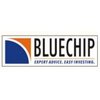
Bluechip Corporate Investment Centre

T R Chadha & Co Llp

Escalon Business Services
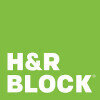
H&R Block
- Home >
- Interviews >
- S.S. Kothari Mehta & Co Interview Questions




